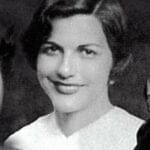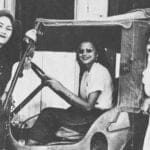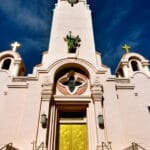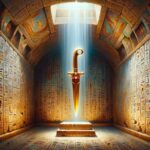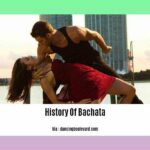The Dominican Republic, a nation known for its vibrant culture and stunning landscapes, carries a history marked by both triumph and tragedy. One of the most defining and turbulent periods in the country’s past is undoubtedly the era of Rafael Trujillo, a figure whose name still evokes strong emotions even decades after his death. From 1930 to 1961, Trujillo held the reins of power, shaping the Dominican Republic in ways that continue to resonate today. This article delves into the complexities of Trujillo’s rule, examining the man, his methods, and the lasting impact he had on the nation and its people.
Dominican Republic under Trujillo
The rise of Rafael Trujillo to absolute power in the Dominican Republic is a tale often shrouded in controversy. Some historians suggest that his ascent was a calculated maneuver, leveraging his position within the military to orchestrate a coup in 1930. Others propose that he capitalized on existing political unrest, promising stability and order while harboring a more sinister agenda. Regardless of the specific circumstances, Trujillo, upon seizing control, wasted no time in consolidating his grip on the nation.
One of his first acts was the establishment of a formidable secret police force, known as the SIM (Servicio de Inteligencia Militar). This organization, fiercely loyal to Trujillo, became the iron fist of his regime, responsible for silencing any form of opposition or dissent. Basic freedoms that most democracies take for granted – freedom of speech, freedom of the press, the right to assemble – were swiftly eradicated. The Dominican Republic, under Trujillo’s watchful eye, transformed into a nation where fear and silence prevailed.
Trujillo’s control extended far beyond the political sphere. He treated the Dominican economy as his own personal fiefdom, manipulating industries and businesses to enrich himself and his allies. Newspapers and radio stations, tightly controlled by the regime, became mouthpieces for Trujillo’s propaganda machine, painting a rosy picture of progress and prosperity that masked the reality of life under his oppressive rule. While some sectors of the economy did experience growth, particularly those that benefited Trujillo and his cronies, this often came at the expense of the Dominican people.
Trujillo’s personal life was a tapestry woven with threads of extravagance, ruthlessness, and paranoia. Tales of his numerous affairs, illegitimate children, and lavish spending became the stuff of legend, whispered in hushed tones even today. The construction of opulent palaces and the omnipresent statues of himself erected throughout the nation served as constant reminders to the Dominican people of who held ultimate authority.
The true human cost of Trujillo’s reign of terror remains a subject of debate among historians. The culture of fear he so effectively cultivated ensured that even after his death, many remained reluctant to speak out about the atrocities they witnessed or endured. While the exact number of victims may never be known, what is undeniable is the climate of fear and oppression that permeated Dominican society during those dark decades.
The end of Trujillo’s reign, when it finally arrived in 1961, was as swift and brutal as his rule had been. A group of conspirators, motivated by a potent mix of personal grievances and a yearning for freedom, assassinated Trujillo on May 30th. His death sent shockwaves through the nation and across the globe. For the Dominican people, it marked the end of an era, a moment of collective liberation and a chance to rebuild their lives and their nation.
The Dominican Republic that emerged from the shadow of Trujillo’s dictatorship faced the daunting task of confronting a painful past and forging a new path. The scars of his regime ran deep, impacting the country’s political, social, and economic fabric. Even today, the legacy of Trujillo’s rule serves as a stark reminder of the fragility of freedom and the importance of safeguarding democratic values.
When was the Dominican Republic under a dictatorship?
The Dominican Republic experienced a prolonged period of dictatorship under the rule of Rafael Trujillo, lasting from 1930 to 1961. This era, often referred to as the Trujillo Era, was characterized by political repression, human rights abuses, and a pervasive climate of fear. Trujillo, a former military officer, seized control of the government through a combination of cunning political maneuvering and brute force.
To maintain his grip on power, Trujillo employed a variety of tactics designed to silence opposition and instill fear in the population. One of his most effective tools was the SIM, his notorious secret police force. The SIM operated with impunity, monitoring citizens, suppressing dissent, and employing violence and intimidation against anyone suspected of opposing the regime. This created an environment where freedom of speech and political participation were nonexistent.
Trujillo’s dictatorship was not solely defined by political repression; it was also deeply intertwined with corruption and economic exploitation. Trujillo and his cronies amassed vast fortunes by siphoning off state resources, seizing private property, and manipulating industries to their advantage. This widespread corruption exacerbated existing social and economic inequalities, leaving many Dominicans living in poverty while Trujillo and his inner circle enjoyed lavish lifestyles.
The Trujillo Era cast a long shadow over the Dominican Republic, the effects of which are still felt today. The trauma of widespread human rights abuses, the culture of fear, and the legacy of corruption continue to shape the country’s political and social landscape.
| Feature | Description |
|---|---|
| Time Period | 1930 – 1961 |
| Dictator | Rafael Trujillo |
| Characteristics | Oppression, brutality, censorship, corruption |
| Legacy | Lasting impact on politics and society, trauma |
Where to Learn More:
- “The Dominican Republic: A National History” by Frank Moya Pons offers a comprehensive look into this complex history.
This is but a glimpse into this tumultuous period. The Dominican Republic’s journey, marked by both darkness and resilience, offers a wealth of knowledge for those who seek to understand the complexities of the nation’s past.
Who Ruled the Dominican Republic After Trujillo?
The assassination of Rafael Trujillo in 1961 plunged the Dominican Republic into a period of profound political instability. The power vacuum left in the wake of the dictator’s death set the stage for a tumultuous period marked by coups, counter-coups, a civil war, and the return of familiar faces to the political arena.
One of the first figures to attempt to fill the void was Joaquín Balaguer, who had served as Trujillo’s vice president. Balaguer’s tenure, however, proved short-lived, lasting a mere seven months before he was ousted in a coup.
Rafael Bonnelly, the president of the Dominican Senate at the time, stepped in as a temporary leader, overseeing the country for about a year. Bonnelly’s primary role was to guide the Dominican Republic towards its first free elections in decades, a monumental task given the nation’s history.
Those elections, held in 1962, resulted in the victory of Juan Bosch, a respected intellectual and politician. Bosch’s presidency, unfortunately, was also short-lived. His attempts to implement progressive reforms faced staunch opposition from conservative elements within the military and elite circles, leading to his overthrow in 1963.
Donald Reid Cabral, a businessman and diplomat, then assumed power, hoping to bring stability to the beleaguered nation. Like his predecessors, Reid Cabral found himself caught in the crosshairs of political turmoil, lasting even less time in office than Bosch.
In 1965, the Dominican Republic descended into civil war, with supporters of the ousted Juan Bosch clashing with those who opposed his return. The situation escalated to the point where the United States, fearing the spread of communism in the region, intervened militarily. The civil war ended with the defeat of pro-Bosch forces.
Following the war, Héctor García-Godoy, a seasoned diplomat, was appointed as provisional president. García-Godoy played a crucial role in overseeing the drafting of a new constitution and paving the way for fresh elections.
In a twist of fate, those elections, held in 1966, saw the return of Joaquín Balaguer to the presidency. Balaguer’s second stint in power would last for twelve years, a period marked by a focus on stability and close ties with the United States.
The years following Trujillo’s death were a rollercoaster ride for the Dominican Republic. It took time, upheaval, and a great deal of resilience for the country to find a semblance of stability. The legacy of Trujillo’s dictatorship continued to cast a long shadow, but the Dominican people, through it all, demonstrated their commitment to forging a democratic path.
This period is a testament to the complex and often turbulent transition from dictatorship to democracy. For those interested in delving deeper into this captivating chapter of Dominican history, there are numerous books and scholarly articles available that offer rich insights into this period of transformation.
What was the capital of the Dominican Republic during Trujillo?
In a move that exemplified Rafael Trujillo’s desire to exert control over all aspects of Dominican life, he renamed the nation’s capital, Santo Domingo, to “Ciudad Trujillo” (Trujillo City) in 1936. This symbolic act, while seemingly superficial, spoke volumes about Trujillo’s ambition and his relentless pursuit of self-aggrandizement. By stamping his name on the capital city, he aimed to solidify his image as the nation’s undisputed leader and to erase any trace of the pre-Trujillo era.
The name change, however, did not sit well with many Dominicans. To them, it represented yet another example of Trujillo’s overreach and his disregard for the country’s history and identity. The name Ciudad Trujillo remained throughout his reign, serving as a constant reminder of his grip on power.
Upon Trujillo’s assassination in 1961, one of the first acts of the newly installed government was to restore the capital’s original name to Santo Domingo. This symbolic act represented far more than just a name change; it signified the rejection of Trujillo’s legacy and the Dominican people’s desire to reclaim their history and identity.
This episode in Dominican history serves as a reminder of the enduring power of symbols and the importance of national identity. It also highlights the lengths to which dictators will go to assert their authority and the resilience of a people determined to restore their nation’s true character.
It’s worth noting that the legacy of Trujillo’s reign, including the renaming of Santo Domingo, is a complex and multifaceted issue. Ongoing research and debate continue to shed light on his actions and their long-term effects on the Dominican Republic.
Why did Haiti occupy the Dominican Republic?
The Haitian occupation of the Dominican Republic, lasting from 1822 to 1844, is a complex historical event shaped by a confluence of factors. To fully grasp the reasons behind this occupation, it’s essential to consider the broader historical context, particularly the legacy of colonialism and the struggle for freedom in the Caribbean.
At the turn of the 19th century, the island of Hispaniola, which the Dominican Republic shares with Haiti, was deeply enmeshed in the struggle against European colonialism. Haiti, having successfully overthrown French rule in a momentous revolution, emerged as an independent nation in 1804. The eastern part of the island, present-day Dominican Republic, remained under Spanish control.
Haitian leader Jean-Pierre Boyer, who came to power in 1818, faced a precarious geopolitical situation. European powers, wary of the Haitian Revolution’s impact on their own colonies, sought to undermine Haiti’s independence. Boyer believed that uniting the entire island under Haitian control would strengthen Haiti’s position, both economically and militarily, and serve as a bulwark against external threats.
In 1822, Boyer, capitalizing on political instability within the Dominican Republic, sent troops to occupy the eastern part of the island. His goals were multifaceted. Unification, he argued, would not only strengthen Haiti but also liberate Dominicans from Spanish colonialism. However, Boyer’s rule was met with resistance from many Dominicans who resented what they perceived as a foreign occupation.
Economic factors also played a role in the occupation. Haiti, facing economic difficulties, imposed heavy taxes and tariffs on Dominican goods, which fueled resentment among the Dominican population. Furthermore, social and cultural differences between the two nations, including language and customs, further exacerbated tensions.
The Haitian occupation had a profound impact on shaping Dominican national identity. The desire for self-determination and independence from Haitian rule became a rallying cry for Dominican nationalists, who eventually rose up in 1844 and successfully expelled Haitian forces, marking the birth of the Dominican Republic as an independent nation.
It’s important to approach this historical event with nuance, recognizing that the Haitian occupation was not simply an act of aggression, but rather a product of the complex political, economic, and social forces at play in the Caribbean during this turbulent period.
What Good Things Did Trujillo Do?
The legacy of Rafael Trujillo is a complex and often contradictory one. While his reign is undeniably defined by brutality, repression, and corruption, it is also marked by periods of significant economic growth and modernization. This duality makes assessing Trujillo’s rule a challenging task, one that requires acknowledging the full spectrum of his impact on the Dominican Republic.
One undeniable aspect of Trujillo’s rule was his focus on economic development. Under his leadership, the Dominican Republic experienced substantial growth in industries such as sugar, cattle ranching, and manufacturing. Trujillo invested heavily in infrastructure projects, building roads, bridges, schools, and hospitals. These initiatives, while often benefiting his allies and serving to consolidate his power, did contribute to improving living standards for some Dominicans.
Trujillo’s economic policies, however, came at a significant human cost. The progress made during his reign was built on a foundation of forced labor, suppression of workers’ rights, and the enrichment of a select few at the expense of the majority. Furthermore, his economic achievements were often overshadowed by his regime’s brutality and rampant corruption.
It’s also worth noting that Trujillo’s emphasis on modernization often manifested in ways that served his authoritarian tendencies. He promoted a culture of nationalism and used propaganda to bolster his image as a benevolent leader. While he did expand access to education and healthcare, these systems were often used to indoctrinate citizens and stifle dissent.
Assessing Trujillo’s legacy requires acknowledging both the positive changes that occurred under his rule and the brutal methods used to achieve them. Ultimately, any attempt to weigh the “good” against the “bad” of his regime must contend with the undeniable truth that his accomplishments were achieved through the suffering and oppression of the Dominican people.
Was Trujillo a Good Leader?
The question of whether Rafael Trujillo was a “good” leader is a complex and multifaceted one that continues to spark debate and reflection. To answer this question, it’s crucial to define what constitutes “good” leadership. Is it solely about economic progress and stability, or does it also encompass respect for human rights, democratic values, and the well-being of all citizens?
Trujillo’s supporters often point to the economic advancements and modernization that occurred during his rule as evidence of his positive impact. Under his leadership, the Dominican Republic experienced growth in various sectors, including agriculture, industry, and infrastructure. His supporters argue that he brought stability and order to a country plagued by political turmoil.
However, these accomplishments were achieved through an iron-fisted approach that trampled on fundamental human rights and democratic principles. Trujillo’s regime was responsible for countless atrocities, including the imprisonment, torture, and execution of political opponents; the suppression of free speech and assembly; and the infamous Parsley Massacre, a horrific act of ethnic cleansing targeting Haitians living in the Dominican Republic.
Furthermore, Trujillo’s economic policies, while initially successful, ultimately benefited a select few, primarily himself and his cronies. He amassed a vast personal fortune while many Dominicans continued to live in poverty. His regime was riddled with corruption, and economic opportunities were often distributed based on loyalty to Trujillo rather than merit or fairness.
In evaluating Trujillo’s leadership, it’s essential to consider the human cost of his policies and the long-term consequences of his authoritarian rule. While he may have brought about some positive changes, these were achieved through brutal methods that left a lasting legacy of trauma, fear, and social division. His regime serves as a stark reminder that progress achieved at the expense of human rights and democratic values is ultimately hollow and unsustainable.
Who was the dictator of the Dominican Republic from 1930 to 1961?
Rafael Leónidas Trujillo Molina, a military officer who rose to prominence in the early 20th century, ruled the Dominican Republic with an iron fist from 1930 to 1961. His regime, characterized by authoritarianism, brutality, and a pervasive cult of personality, continues to cast a long shadow over the nation’s history.
Trujillo’s rise to power was marked by cunning political maneuvering and a ruthless approach to eliminating rivals. He exploited existing political instability and strategically positioned himself within the military to seize control of the government. Once in power, he wasted no time in consolidating his grip, establishing a repressive apparatus that silenced opposition and instilled fear in the population.
One of the hallmarks of Trujillo’s dictatorship was the use of violence and intimidation to maintain control. His secret police force, known as the SIM, operated with impunity, targeting anyone suspected of opposing the regime. Disappearances, torture, and extrajudicial killings became commonplace. The SIM’s reign of terror created a climate of fear that permeated Dominican society, silencing dissent and crushing any hope of political opposition.
Trujillo’s ambitions extended beyond the borders of the Dominican Republic. He sought to project his power and influence throughout the Caribbean and Latin America, engaging in espionage, supporting coups in neighboring countries, and even orchestrating an assassination attempt on the president of Venezuela. His actions made him a pariah on the international stage, but he remained largely untouchable within the Dominican Republic, where his control seemed absolute.
The Trujillo era is a complex and often contradictory period in Dominican history. While he is remembered for his brutality and repression, he also oversaw a period of economic growth and modernization. He invested in infrastructure, promoted industrialization, and improved public health services. However, these accomplishments were achieved through forced labor, the suppression of workers’ rights, and widespread corruption that enriched Trujillo and his cronies while many Dominicans remained mired in poverty.
The assassination of Trujillo in 1961, orchestrated by a group of dissidents within his own inner circle, marked the end of his reign of terror. His death ushered in a period of political instability and transition for the Dominican Republic, as the nation grappled with the legacy of his rule and the challenges of building a more democratic future.
When did the US take control of the Dominican Republic?
While the United States never technically “took control” of the Dominican Republic in the sense of establishing a formal colony, it did occupy the nation militarily from 1916 to 1924. This intervention, driven by a complex interplay of economic, political, and strategic interests, had a profound impact on the course of Dominican history.
At the turn of the 20th century, the Dominican Republic found itself grappling with significant political instability and mounting foreign debt, primarily to European creditors. The United States, having emerged as a regional power in the aftermath of the Spanish-American War, viewed the Dominican Republic’s instability as a potential threat to its own interests in the Caribbean.
In 1905, under the guise of the Roosevelt Corollary to the Monroe Doctrine, which asserted the United States’ right to intervene in the affairs of Latin American nations deemed unstable or threatened by European powers, the U.S. took over the management of the Dominican Republic’s customs revenue, using it to repay foreign creditors.
This intervention, however, did little to quell the Dominican Republic’s internal political turmoil. In 1916, following a coup led by Desiderio Arias, the U.S., under President Woodrow Wilson, sent Marines to occupy the country. The stated goal of the intervention was to restore order and protect American interests.
The U.S. occupation lasted for eight years and had a significant impact on Dominican society. The U.S. military government implemented a number of reforms, including the creation of a new constitution, the reorganization of the armed forces, and the modernization of infrastructure. However, the occupation also faced resistance from Dominicans who resented the presence of a foreign power on their soil.
The U.S. withdrew its forces in 1924, leaving behind a legacy that continues to be debated by historians. Some argue that the occupation, while imposing strict control, brought about much-needed stability and modernization. Others contend that it significantly hampered the development of Dominican democracy and sowed the seeds for future political turmoil.
The U.S. occupation of the Dominican Republic is a complex and multifaceted historical event with no easy answers. It highlights the intricate relationship between the United States and Latin America and the enduring legacy of U.S. intervention in the region.
What was happening in the Dominican Republic in 1994?
The year 1994 proved to be a pivotal year for the Dominican Republic, marked by a combination of political progress, economic challenges, and natural disasters that tested the resilience of the Dominican people.
Politically, the Dominican Republic was still grappling with the legacy of decades of authoritarian rule, most notably the Trujillo era. The country had made strides towards democracy in the years following Trujillo’s death, but the shadow of his dictatorship continued to linger.
Joaquín Balaguer, a controversial figure who had previously served as Trujillo’s puppet president, returned to power in 1986 after a period of exile. Despite his association with the former dictatorship, Balaguer, now in his eighties, presented himself as a reformed democrat.
The 1994 presidential election was highly contested, with Balaguer seeking re-election amidst allegations of fraud and voter suppression. International observers raised concerns about the fairness of the election, which Balaguer narrowly won. However, in a move aimed at easing tensions and ensuring stability, he agreed to serve a shortened two-year term.
Economically, the Dominican Republic continued to grapple with challenges such as poverty, inequality, and a reliance on a few key industries. Tourism, however, was emerging as a bright spot, attracting foreign investment and creating jobs.
In September 1994, Hurricane Gordon, a powerful Category 1 hurricane, slammed into the Dominican Republic, causing widespread damage and claiming the lives of over 1,100 people. The hurricane devastated infrastructure, agriculture, and homes, setting back the country’s economic progress.
Despite the challenges, the Dominican people demonstrated resilience in the face of adversity. The events of 1994 underscored the ongoing struggle to consolidate democracy, address deep-seated socioeconomic issues, and cope with the impacts of natural disasters.
What Happened in the Dominican Republic in 1965?
The year 1965 stands out as a particularly tumultuous and consequential year in Dominican history, marked by a civil war, foreign intervention, and the enduring legacy of Cold War tensions.
The seeds of the conflict were sown in 1963 when Juan Bosch, the first democratically elected president after the end of the Trujillo dictatorship, was overthrown in a military coup. Bosch’s progressive policies, which aimed to address social and economic inequality, had alienated powerful sectors of Dominican society, including elements within the military and the wealthy elite.
Following Bosch’s ouster, a civilian junta assumed control, but it proved unable to quell the growing unrest. On April 24, 1965, a group of military officers, loyal to Bosch and calling themselves the Constitutionalists, launched a rebellion aimed at restoring him to power.
The Dominican Republic quickly descended into civil war, with the Constitutionalists facing off against the loyalist forces of the junta. The conflict took on Cold War overtones, with the United States, fearing a communist takeover similar to what had occurred in Cuba just a few years earlier, intervening militarily on the side of the junta.
On April 28, 1965, U.S. President Lyndon B. Johnson ordered the deployment of thousands of U.S. troops to the Dominican Republic, ostensibly to protect American lives and prevent a communist takeover. The intervention, however, proved highly controversial, drawing criticism from many Latin American nations and fueling accusations of U.S. imperialism.
The arrival of U.S. troops tipped the balance of power in favor of the junta, and after months of fighting, a ceasefire was declared in September 1965. The civil war resulted in the deaths of thousands of Dominicans and left the country deeply divided.
The U.S. intervention had a lasting impact on the Dominican Republic. It solidified the United States’ role as the dominant power in the region and reinforced the perception of the Dominican Republic as a pawn in Cold War politics.
In the aftermath of the civil war, the Dominican Republic entered a period of political instability and authoritarian rule. While elections were eventually held, true democracy remained elusive, as the legacy of the 1965 conflict continued to cast a long shadow over the nation’s political landscape.
Did you know about the brave Mirabal sisters’ powerful quote? Click on the quote of the las Mirabales dominicano to read the entirety of their inspiring words. Also, learn more about the Mirabal sisters resistance movement and their valiant fight against oppression.

